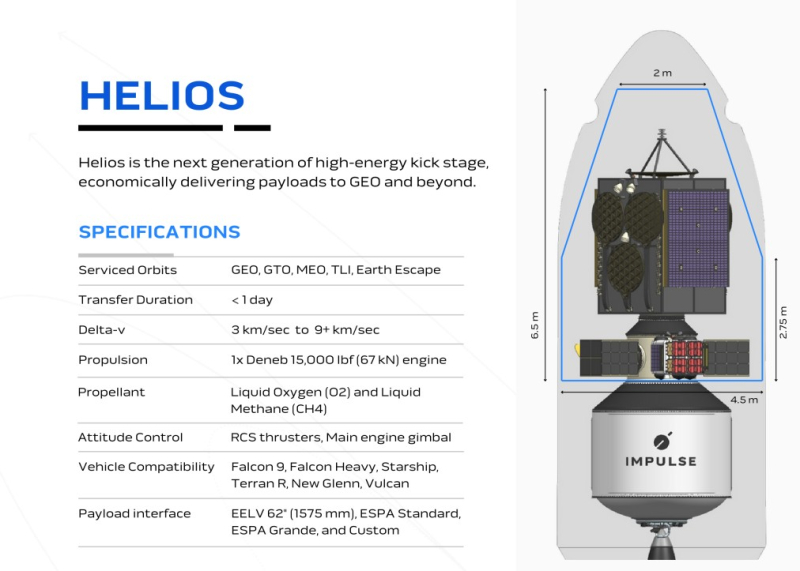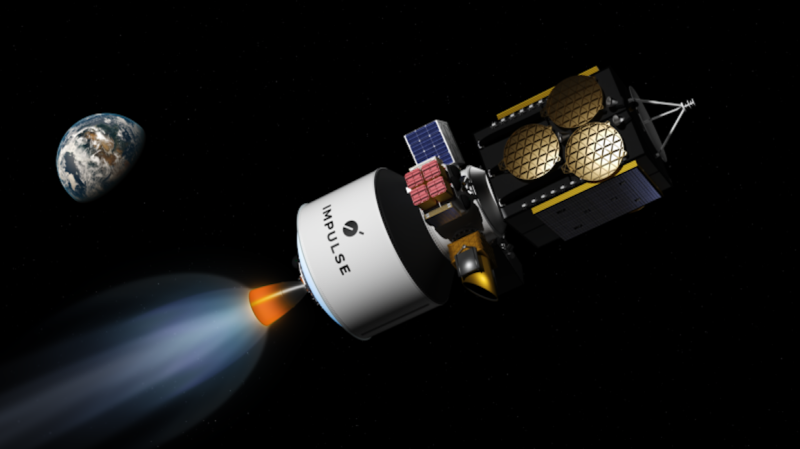The Technology section is published with the support of Favbet Tech


In recent years, a trend has emerged for “tugs” that deliver small satellites to specific orbits. These miniature spacecraft provide the so-called “last mile” and are especially useful for satellites that are launched on joint missions and seek to achieve a different altitude or inclination than the rest of the rocket payload.
However, these space vehicles from D-Orbit, Momentus, Launcher and several others are usually designed for satellites weighing from several tens to several hundred kilograms. What was missing was a larger space tug that could launch larger satellites into more distant orbits. It is this market that Impulse Space's new Helios spacecraft intends to serve, ArsTechnica reports.
To geostationary orbit per day
According to Impulse Space founder and CEO Tom Mueller, the idea is to enable the low-cost Falcon 9 rocket to launch large satellites into geostationary space:
We are essentially adding a third degree to the average launch vehicle. It does most of what Falcon Heavy will do for much less money.
Mueller was one of the founders of SpaceX and the lead designer of the Merlin engines that power Falcon rockets. However, he said, the Helios vehicle is designed to fly on any medium- or heavy-lift space vehicle to increase its capabilities. For example, Helios is designed to launch satellites weighing up to 4 tons into geostationary orbit if launched by a Falcon 9 rocket, and up to 5 tons if launched by Relativity's Terran R rocket.

Currently, there are two methods for direct insertion into geostationary orbit for medium and large satellites. The customer can buy a launch on a Falcon Heavy or a Vulcan launch vehicle from United Launch Alliance, which is quite expensive, about twice as expensive as a single launch on a Falcon 9 launch vehicle. Or the satellite can be launched on a medium-class launch vehicle and launched to transfer orbit to geostationary space, requiring a powerful onboard propulsion system, up to $5 million in xenon or other fuel, and six to eight months of lost income during ascent to orbit.
We suggest getting there in a day for much less than either of these options.
—Muller said.
Vacancies
Journalist, author of stories about IT, business and people in MC.today MC.today
Media Buyer Forex Tester Software, Inc., Remote
< p class="job-item">Product Manager Forex Tester Software, Inc., Remote
Business Analyst Join.To.IT, Kiev
Helios will be powered by one of the most reliable space engines, called Deneb. It is as good as Aerojet's legacy RL-10 engine and will have a thrust of 67 kN and will also run on liquid oxygen and liquid methane. The company is currently building Deneb engine components and will begin testing in March, Mueller said. The Helios spacecraft is scheduled to debut in 2026.
The Technology section is published with the support of Favbet Tech


Favbet Tech is IT a company with 100% Ukrainian DNA, which creates perfect services for iGaming and Betting using advanced technologies and provides access to them. Favbet Tech develops innovative software through a complex multi-component platform that can withstand enormous loads and create a unique experience for players. The IT company is part of the FAVBET group of companies.

